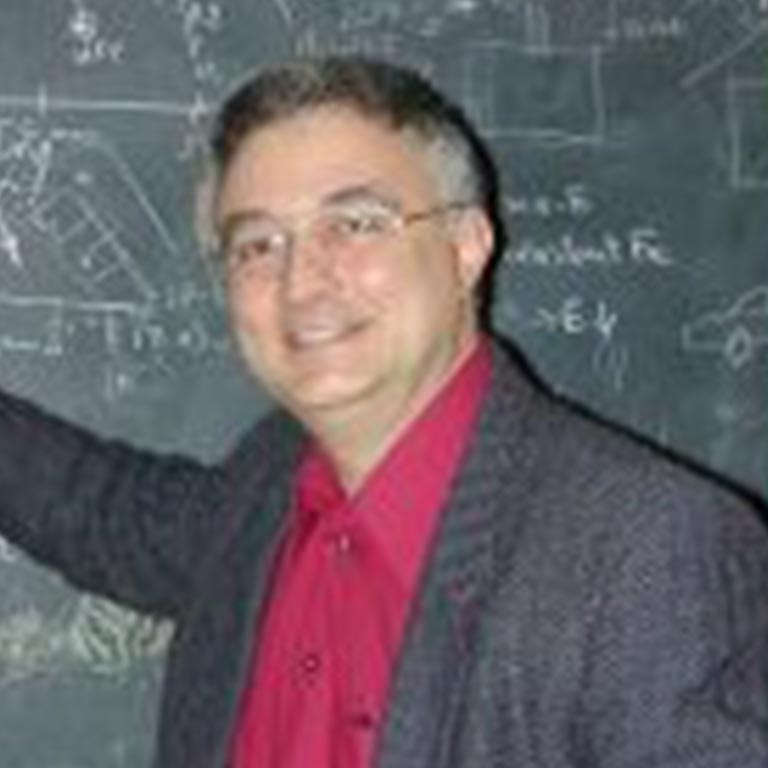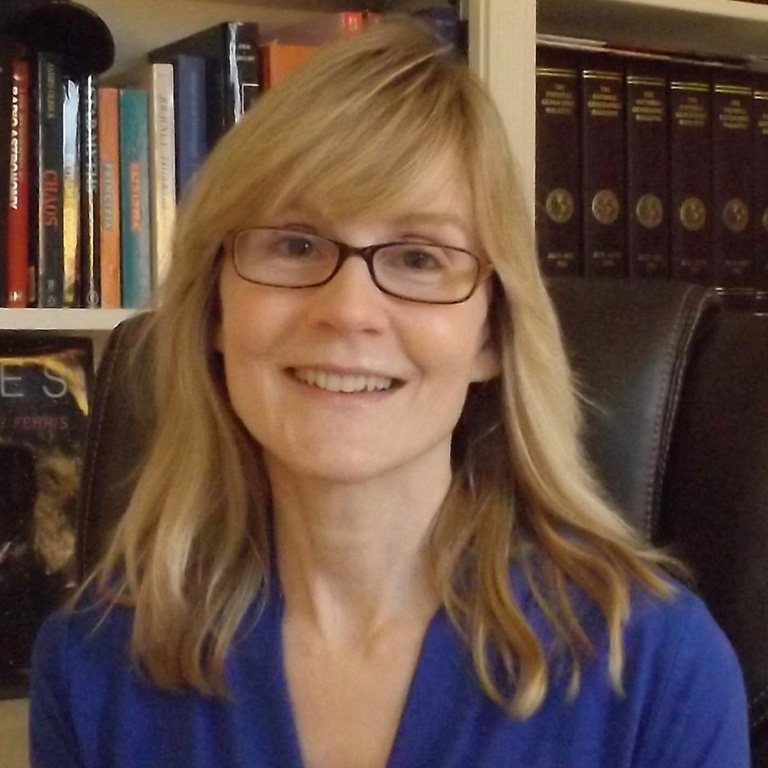Large stellar systems like galaxies and star clusters contain different populations of stars formed at different times or under different conditions. Studies of the composition, ages, and kinematics of these stellar populations can tell us about the origin and evolution of stellar systems like the Milky Way.
Stellar Populations
Constantine Deliyannis

Stellar interior physical mechanisms traced by surface abundances of light elements Li, Be, and B usually depend on metallicity, so when studying these elements in cluster stars, Constantine Deliyannis also determines the abundance of Fe and other elements in the star cluster. This has the side benefit that knowledge of cluster metallicities can lead to improved understanding of the evolution of the Milky Way and how different stellar populations came about, especially when such metallicity information is combined with information about the cluster kinematics and Galactic location. For example, work on one of the oldest open clusters, NGC 188, paradoxically revealed that it has super-solar metallicity. This combined with its unusual kinematics promises to reveal aspects of Milky Way evolution. Deliyannis has also worked on the three most metal-rich clusters known, which are located farther from the Galactic center than expected for clusters of such high metallicity. Continued work may help solve the mystery of their origin, migration processes in the Milky Way, and characteristics of a possible Milk Way bar. A current focus of Deliyannis’ light element work is metal-poor open clusters, which are generally understudied. This work may also provide insights about stellar populations.
Caty Pilachowski
 Catherine Pilachowski participates as a member of the Blanco DECam Bulge Survey (BDBS), a catalog of 6-color photometry of tens of millions of stars in the Galactic bulge, including two dozen globular clusters. The BDBS imaged some 200 square degrees of sky – an area 800 times the size of the full Moon, using six filters from ultraviolet through near-infrared. The full catalog of stars is available on the IU’s Scalable Compute Archive, managed by University Information Technology Services.
Catherine Pilachowski participates as a member of the Blanco DECam Bulge Survey (BDBS), a catalog of 6-color photometry of tens of millions of stars in the Galactic bulge, including two dozen globular clusters. The BDBS imaged some 200 square degrees of sky – an area 800 times the size of the full Moon, using six filters from ultraviolet through near-infrared. The full catalog of stars is available on the IU’s Scalable Compute Archive, managed by University Information Technology Services.
The BDBS is driven by questions about the structure and stellar populations of the Bulge. These data help us define the Bulge’s “X” shape, explore the distribution of stellar metallicities, and answer questions about the ages of stars in the Bulge. Is the Bulge comprised of mostly old stars, or does it contain populations of intermediate-age and younger stars – and how are the different populations distributed in space? We know the Bulge contains globular star clusters, as well, but how much have these clusters contributed to the stellar populations in the Bulge? Answering these questions tells us about the formation and evolution of the central regions of our galaxy.
BDBS photometry of the globular clusters in the Bulge is yielding new information about the clusters’ own multiple stellar populations. We know that nearby globular clusters contain populations of stars with different chemical compositions, and BDBS photometry combined with proper motions from ESA’s Gaia mission allow us to identify probable members of each cluster, and then to look at the distribution of composition in each cluster. Since the BDBS data extend well beyond the clusters’ outer limits, we are able to extend our studies of individual clusters well beyond earlier observations with the Hubble Space Telescope.
Katherine Rhode
 Katherine Rhode studies the stellar populations of galaxies found by the ALFALFA radio survey, which identified more than 30,000 neutral hydrogen (HI) sources spread over 7000 deg2 of sky. She focuses on two types of ALFALFA objects: Ultra-Compact High Velocity Clouds (UCHVCs), which are compact, low-mass HI clouds that may be dwarf galaxies in our local galaxy neighborhood, and Almost-Dark galaxies, which are gas-rich, low surface brightness galaxies at distances of ∼10-100 Mpc. This work led to the discovery of the nearby star-forming dwarf galaxy Leo P as well as other exotic objects like the Almost-Dark galaxy AGC229101, which harbors as much hydrogen gas as our Milky Way but has made hardly any stars.
Katherine Rhode studies the stellar populations of galaxies found by the ALFALFA radio survey, which identified more than 30,000 neutral hydrogen (HI) sources spread over 7000 deg2 of sky. She focuses on two types of ALFALFA objects: Ultra-Compact High Velocity Clouds (UCHVCs), which are compact, low-mass HI clouds that may be dwarf galaxies in our local galaxy neighborhood, and Almost-Dark galaxies, which are gas-rich, low surface brightness galaxies at distances of ∼10-100 Mpc. This work led to the discovery of the nearby star-forming dwarf galaxy Leo P as well as other exotic objects like the Almost-Dark galaxy AGC229101, which harbors as much hydrogen gas as our Milky Way but has made hardly any stars.
Rhode and her collaborators are able to examine the stellar populations in these low-luminosity, low surface brightness galaxies using optical imaging with instruments like the WIYN One Degree Imager camera. For example, imaging and analysis of the stars in Leo P show that it has recently formed a population of luminous blue stars (with ages of a few million years), but it also has an underlying population of Red Giant stars that are many billions of years old. Spectroscopy of the gas around the youngest stars in Leo P indicates an oxygen abundance of about 2% of the Sun’s abundance, making Leo P one of the lowest-metallicity galaxies known.
Enrico Vesperini
 Vesperini’s research addresses fundamental questions concerning the formation and dynamical history of globular clusters. His recent research includes work on various aspects of globular cluster dynamics, the fundamental links between a cluster internal kinematic properties and the key stages of its evolutionary history, and the interplay between stellar dynamics and the stellar content of globular clusters (including the dynamical effects on the origin and evolution of exotic stellar populations such as X-ray binaries, blue stragglers, and binary black holes). Part of Vesperini’s research is devoted to the study of multiple stellar populations in globular clusters, including investigation of the constraints on initial cluster properties needed for the formation of second-generation stars, the differences in the structural and kinematical properties of first- and second-generation stars imprinted by the formation processes, how those differences are erased or modified during a cluster’s long-term evolution, and the implications of the dynamics of multiple populations for some fundamental properties of the cluster stellar content.
Vesperini’s research addresses fundamental questions concerning the formation and dynamical history of globular clusters. His recent research includes work on various aspects of globular cluster dynamics, the fundamental links between a cluster internal kinematic properties and the key stages of its evolutionary history, and the interplay between stellar dynamics and the stellar content of globular clusters (including the dynamical effects on the origin and evolution of exotic stellar populations such as X-ray binaries, blue stragglers, and binary black holes). Part of Vesperini’s research is devoted to the study of multiple stellar populations in globular clusters, including investigation of the constraints on initial cluster properties needed for the formation of second-generation stars, the differences in the structural and kinematical properties of first- and second-generation stars imprinted by the formation processes, how those differences are erased or modified during a cluster’s long-term evolution, and the implications of the dynamics of multiple populations for some fundamental properties of the cluster stellar content.
Vesperini’s work is based on theoretical calculations and numerical simulations but it maintains a close connection with observations and he serves as co-investigator on several projects based on data from the Hubble Space Telescope and the European Southern Observatory VLT telescope. He uses numerical simulations that leverage the outstanding computing facilities available at Indiana University, including, for example, Big Red 3, Carbonate, Quartz, and Big Red 200.

 The College of Arts
The College of Arts